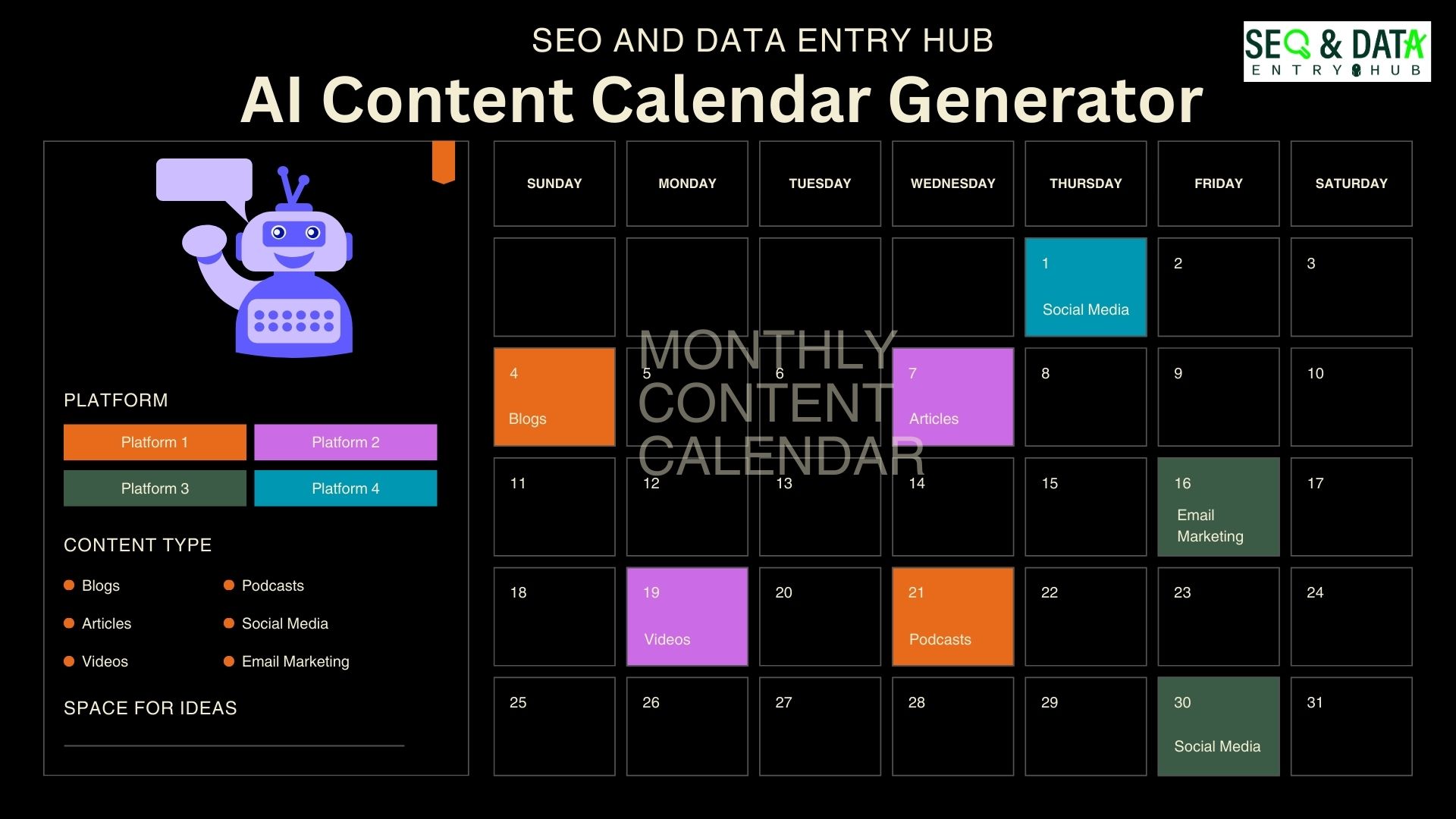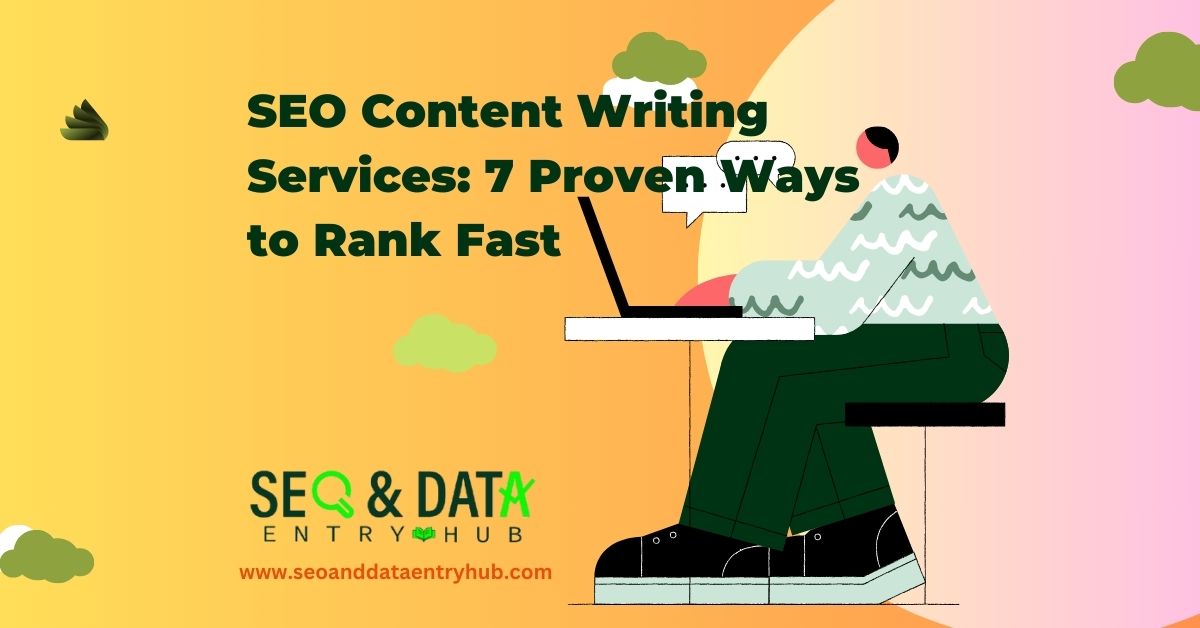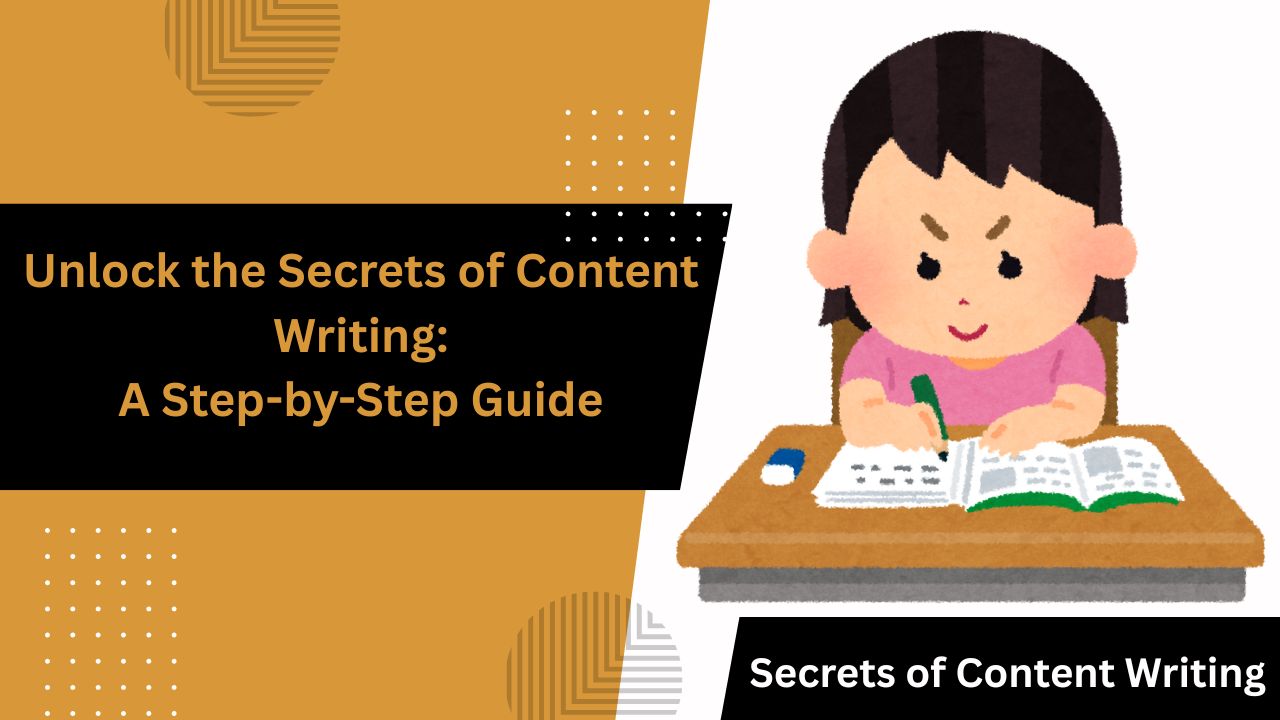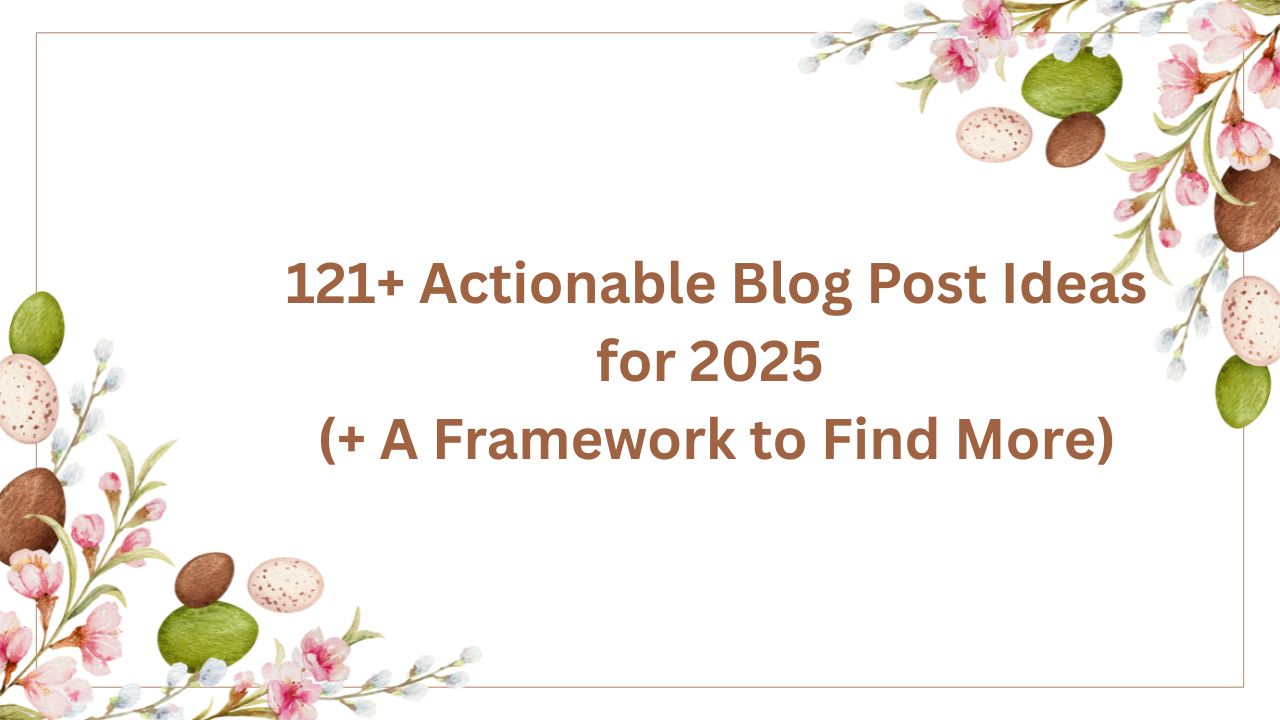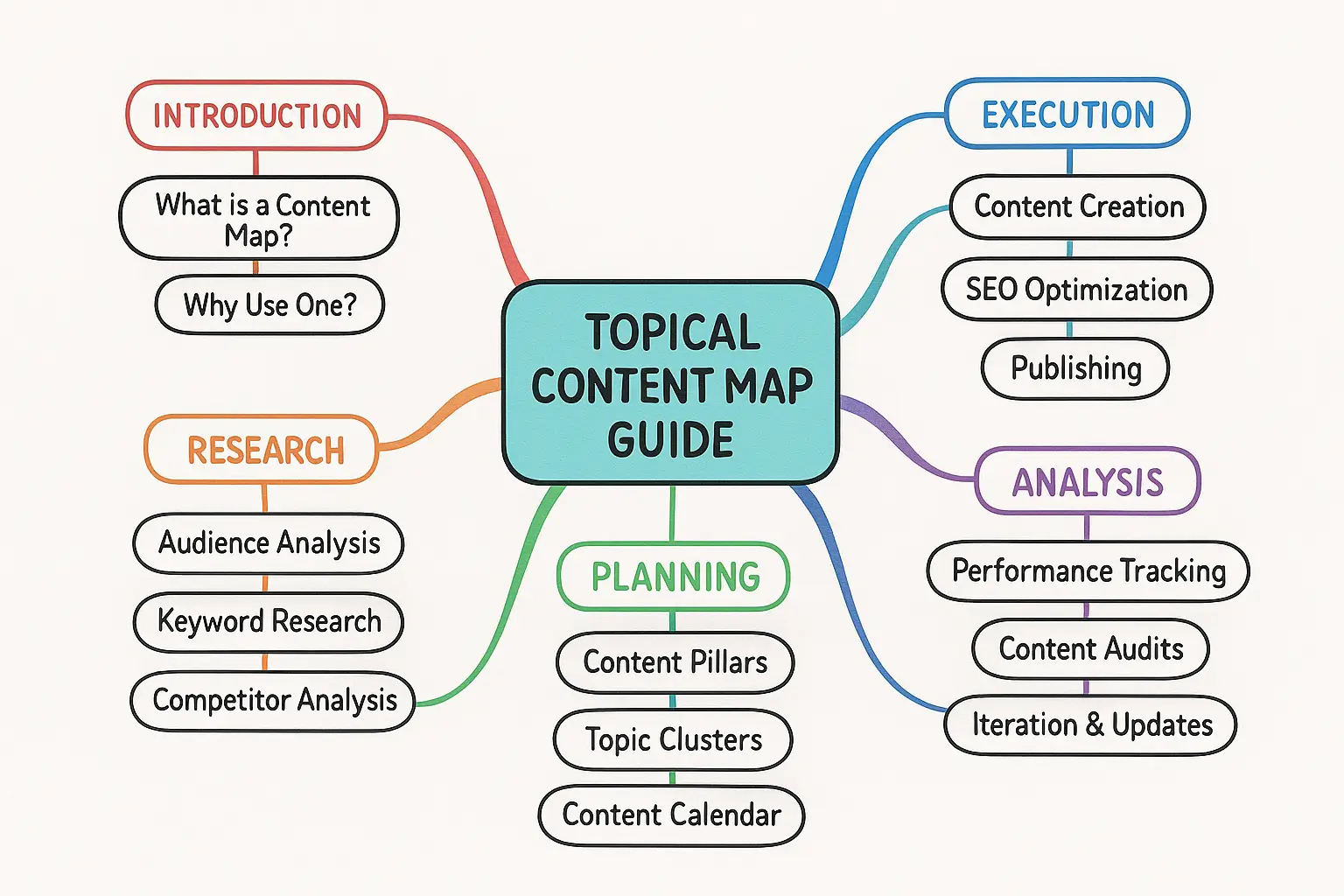
(Table of Content) If you have time, please read the entire article or click on your desired section
ToggleStop Guessing, Start Ranking: The Definitive Guide to the Topical Content Map
Here’s a reality check for every content writer!
According to Tim Soulo, a writer at Ahrefs, 96.55% of web pages get zero organic traffic from Google. And 1.94% get between one and ten for each month.
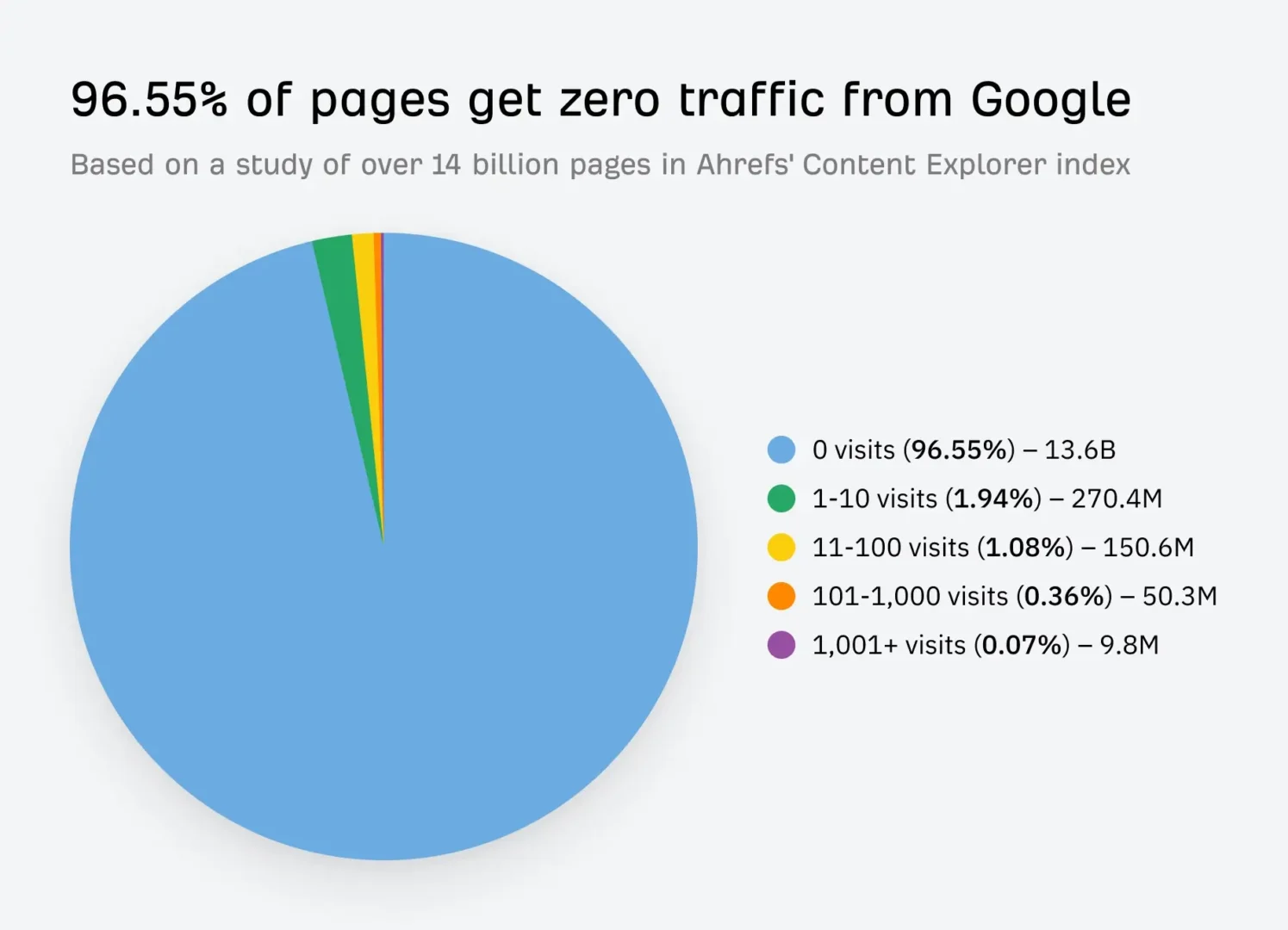
It means that most content published online is never found through search.
You know the effort it takes. You spend hours, even days, on a single article. You research, write, and polish every word of your manuscript to produce an authentic and SEO optimized article. Please read our article, ‘Unlock the Secrets of Content Writing: A Step-by-Step Guide,’ to learn more about content writing in detail
You hit “publish” with high hopes, only to see your work disappear into a digital void. Your content, no matter how good, is invisible.
The reason is simple. To a search engine, a single article is just a whisper. It doesn’t prove you have any real knowledge on the subject.
You must prove your authority on the specific topic to rank on the SERP (search engine result page).
This is where a topical content map changes the game.
It is a blueprint for your expertise. It’s a strategy that connects your individual articles into a powerful network. This network proves your authority to Google and other search engines. It turns your whisper into a roar.
This way, you can stop writing random articles and build a real content strategy. Mastering this isn’t just another tactic; it’s a fundamental shift in how you approach content writing.
In this guide, I’ll teach you exactly how to build one. We’ll cover the step-by-step process, the core concepts, and the best tools for the job.
Let’s begin.
Defining the Core Concepts: Topical Maps, Pillars, and Clusters
To build authority with search engines, you must have a concrete plan. The following three concepts are the foundation of that plan. Think of them as the three essential components of your content strategy.
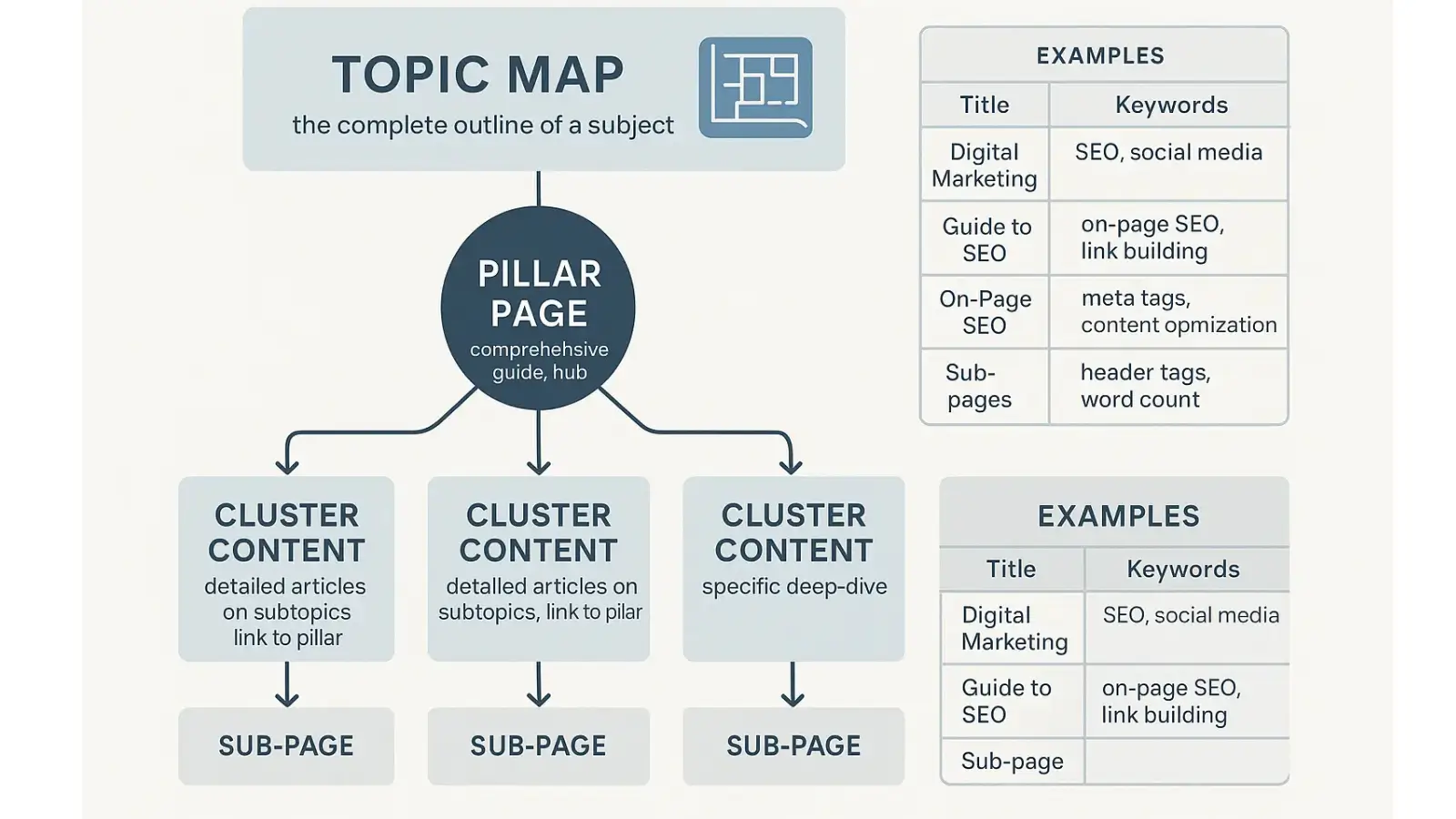
- The Topic Map
A topic map is your high-level blueprint. It is the complete outline of a subject you want to dominate in search results.
It is not a single article. It is the entire structure of your expertise, showing how every piece of content you create on a subject connects.
Think of it as the architectural plan for a library before you even buy the first book.
- The Pillar Page
The pillar page is the center of your map. It is a broad, comprehensive guide on a single, high-level topic, targeting a broad, high-volume keyword.
It is a long form of writing. Sometimes it goes up to 5,000 words or more.
It covers all major aspects of a topic. It answers the big questions but leaves room for more detailed explanations in the cluster content.
It is a hub. It links out to your cluster articles and is the primary page you want to rank for the main topic.
- Cluster Content (and Sub-pages)
Cluster content articles are the support system for your pillar. Each one targets a more specific, long-tail keyword related to the main pillar topic. They dive deep into a single sub-topic that was only touched upon in the pillar page.
The key is to structure this relationship deliberately, with each piece of content targeting a specific keyword. Let’s use your excellent example as the model.
Here is how the hierarchy works in practice:
| Content Level | Proposed Title / Topic | Primary Focus Keyword |
| Pillar | The Ultimate Guide to SEO Content Writing Services | SEO Content Writing Services |
| Cluster | Content Writing Strategies That Get Results | Content Writing Strategies |
| Sub-page | How to Create a Content Calendar That Works | content calendar creation |
| Sub-page | A Guide to Identifying Your Target Audience | define target audience |
| Sub-page | How to Do Topic Research for Blog Posts Ideas | topic research for blogs Ideas |
| Sub-page | Essential Types of Content Writing with Examples | Types of Content Writing |
The most crucial part is that every cluster and sub-page article must link to the main pillar page. This action funnels authority (“link juice”) from your detailed posts to your central hub.
In turn, the pillar page should link to these relevant cluster posts.
This creates a tightly woven web of internal links. When Google’s crawlers see this organized structure, they recognize your deep and authoritative knowledge on the subject.
This is how you prove your expertise and build topical authority.
The “Why”: How Topical Mapping Boosts Your SEO Performance
As I described, the pillar-cluster model isn’t just about organizing your content; it’s about sending powerful signals to search engines like Google, Baidu, Yandex, etc.
This approach is essential because:
- It is the core of a modern and effective content strategy.
- This approach is SEO friendly
- It directly impacts the factors that drive rankings and organic traffic. Let’s break down the key benefits.
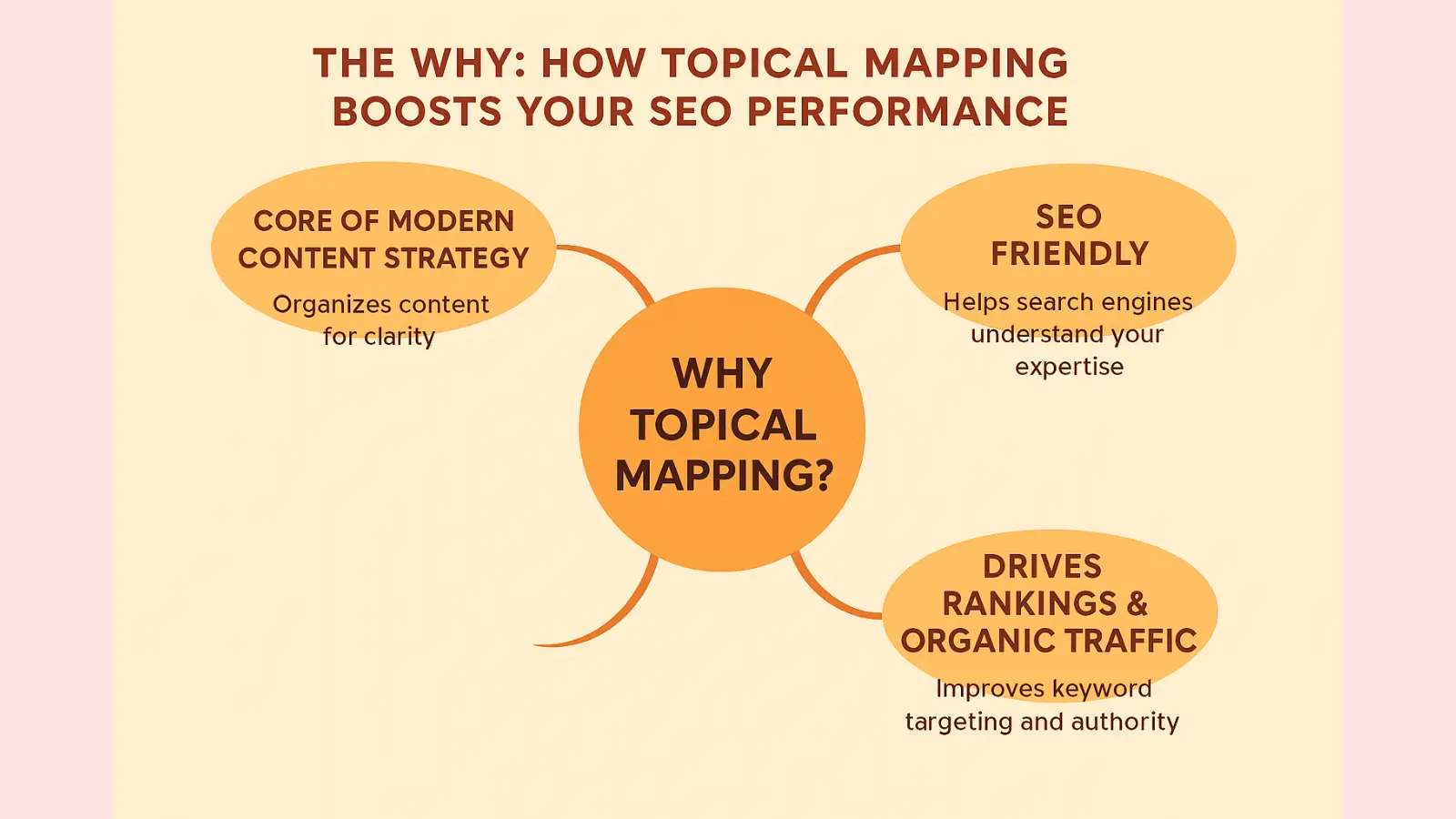
A mind map showing why topical content mapping is crucial: it forms the core of a modern content strategy, organizes content for clarity, and strengthens your authority and topic targeting.
1. It Builds Unshakeable Topical Authority:
Previously, you could rank by targeting isolated keywords and considering keyword density, keyword stuffing, semantic keywords, etc.
Today, Google’s algorithm is far more sophisticated, prioritizing topical authority and natural language processing (NLP).
It doesn’t just want to rank a single page; it wants to rank the most credible, comprehensive resource on a given subject. The pillar/cluster model is purpose-built to demonstrate this.
By creating a dense network of interlinked content, you’re not just telling Google you have an article about Content Writing Strategies; you’re proving you have deep expertise on Content Writing.
Moreover, the pillar/cluster model directly supports Google’s E-E-A-T (Experience, Expertise, Authoritativeness, and Trustworthiness) guidelines. It signals that you are a subject-matter expert.
When Google recognizes your site as an authority, it’s more likely to rank all your related pages higher, from the broad pillar to the niche sub-pages.
2. It Dramatically Improves User Experience and On-Page Metrics:
A well-structured topic cluster is a dream for users; it makes it easier to navigate a website. This means visitors get a complete overview of the topic when they land on your pillar page.
They don’t need to go back to Google if they want to learn more about that specific sub-topic. They can simply click the internal link you’ve provided.
If you land on my pillar article, “Unlock the Secrets of Content Writing: A Step-by-Step Guide, ” you will get an ideal example.
This seamless navigation has a direct impact on crucial user experience (UX) signals and on-page metrics:
- Lower Bounce Rate: Users find what they need and are encouraged to explore further, rather than leaving after viewing a single page.
- Increased Time on Page / Session Duration: By guiding users from one relevant article to the next, you keep them engaged and on your site longer. It means more time on the website means more chances to rank.
- Higher User Engagement: This structure naturally answers follow-up questions, creating a more satisfying and complete user journey.
These positive signals tell Google that your site provides significant value, which can lead to improved rankings across your entire topic cluster.
3. It Forms the Core of a Sustainable Content Strategy:
Surely, the most significant benefit of topical mapping SEO is strategic.
Topical mapping removes the guesswork from content creation. Instead of publishing random articles and hoping one sticks (the “spaghetti against the wall” approach), you have a clear, logical roadmap.
Your keyword research becomes more focused. You know you need to find primary/focus keywords for your pillars and then identify long-tail keywords and user questions for your cluster content.
This framework makes building a content calendar simple and ensures that every single article you publish has a purpose.
It contributes to a larger goal, building your authority brick by brick, rather than just being another standalone post. This is how you achieve predictable, long-term growth in organic search.
The real power of topical authority is its ripple effect. As Google begins to trust your individual pages, it starts to see your entire website as a more credible source, boosting its authority across the board.
How to Create a Topical Map: A Step-by-Step Guide
Okay, you get the big picture of the topical content plan and why it matters. The real question is, how do you put it into action? Let’s break down the steps.
Building a topical map is a systematic process that transforms your content strategy from a series of guesses into a predictable engine for organic growth.
Follow these five steps to build a powerful topical map from scratch.
Step 1: Identify Your Core Pillar Topic
Everything starts with your pillar page blog/article. This pillar topic will become the subject of your single, most comprehensive article—the central hub of your cluster.
This is the broad and foundational subject you want to be known for. Your goal here is to choose a topic that is the central idea of your niche. To select the pillar page topic, we target a high-volume and low keyword difficulty (KD%) keyword.
The process of finding a pillar topic:
- Brainstorm: What are the main services you offer or the core problems your audience faces?
If you sell email marketing software, your pillar might be “Email Marketing.” For our ongoing example, the pillar is “Content Writing.”
- Keyword Research: To validate your idea, use SEO tools (like Ahrefs, Semrush, or even Google Keyword Planner).
You’re seeking a topic with significant search volume relevant to your offerings. According to the SEO experts, search volume should be more than a hundred per month.
The primary keyword should be broad, typically 1-2 words. You can also use long-tail keywords for your niche or topic of interest.
Some SEO gurus emphasize the KGR (keyword golden ratio) when fixing a topic.
Step 2: Brainstorm and Research Your Cluster Topics
With your pillar defined, it’s time to find the supporting cluster topics. These will form the individual, more detailed articles that link back to your pillar page.
For a cluster, you will uncover all the specific subtopics, questions, and long-tail keywords that are related to your central theme.
Here are the best sources for this research:
- Google Search is Your Best Friend:
-
- People Also Ask (PAA): Type your pillar keyword into Google and analyze the PAA box. These are the exact questions your audience is asking.
-
- Related Searches: At the very bottom of the search results page (SERP), you’ll find this goldmine of related concepts and long-tail keyword ideas (look at the image).
-
- Google Autocomplete: Start typing your keyword followed by words like “how,” “what,” “vs,” or “for,” and see what Google suggests.
-
- Competitor Analysis: Look at the top-ranking articles for your pillar keyword. What subheadings are they using? What specific topics do they cover?
Competitor analysis helps you identify gaps like missing and untapped keywords in their content, giving you extra mileage to find the gaps.
- SEO Tools: You can use your preferred SEO tool’s “Keyword Ideas” or “Topic Suggestions” features to generate hundreds of related keywords and questions.
For our “Content Writing” pillar, this process would uncover cluster topics like Content Writing Strategies, how to become a freelance writer, content writing tools, and content mapping the buyer journey.
Step 3: Group and Structure Your Topics
You will now have a long list of potential topics and keywords. The next step is to bring order to this chaos by grouping related ideas. Look for common themes and categorize your cluster topics logically.
For example, you might create groups like:
- Strategy: (Content Writing Strategies, Content Calendar Creation, etc.)
- Career: (How to Become a Freelance Writer, Building a Portfolio, etc.)
- Process: (Topic Research, Writing a Draft, Editing, etc.)
- Tools: (Best Grammar Checkers, AI Writing Assistants, etc.)
Each of these groups can be a major section within your pillar page, and each individual item within a group is a potential cluster article.
Step 4: Visualize Your Topical Map with a Mind Map
Visualization is a crucial step for seeing the big picture. Don’t keep this structure in a spreadsheet alone. Create a visual representation using a mind map tool (like Miro, XMind, or Coggle) or even just a whiteboard.
- Place your Pillar Topic in the center.
- Create main branches for each Cluster Group (defined in Step 3).
- Create smaller sub-branches for every Sub-page or specific article idea.
This visual map does two things:
- First, it ensures your structure is logical and comprehensive, helping you spot any gaps in your content plan.
- Second, it serves as your blueprint for your internal linking strategy.
You can literally draw lines to see how the cluster articles should link to each other and, most importantly, back to the central pillar page.
Step 5: Execute and Build Your Content Hub
With your map finalized, you have an actionable content plan. Now it’s time to execute.
- Prioritize: You must decide which articles to create first. It’s often best to write the cluster articles before tackling the massive pillar page, as this allows you to build the foundational content you’ll be linking to.
- Write and Optimize: Create each piece of content, ensuring it’s thoroughly optimized for its primary focus keyword.
- Implement Internal Links: As you publish, be disciplined about your linking. Every cluster post must link up to the pillar page.
Link between related cluster posts where it makes sense for the user. Finally, once the cluster content exists, write your pillar page and add the links to your detailed articles.
(My process: I develop my topical content plan before writing. Now I know the main keyword for each article. Therefore, I build pillar articles first, then cluster, and finally sub-page articles. This sequential process helps me to follow my plan.)
Following this process, you create a living, breathing content hub that systematically builds your authority and drives sustainable SEO results.
Case Study: From Content Chaos to a 217% Increase in Leads — A SaaS Story
Let me tell you about a client we’ll call “InnovatePM.” They’re a sharp B2B SaaS company with a fantastic project management tool.
They were doing everything they were told to do in content marketing. They had a blog, a talented writer, and a list of keywords they were trying to rank for.
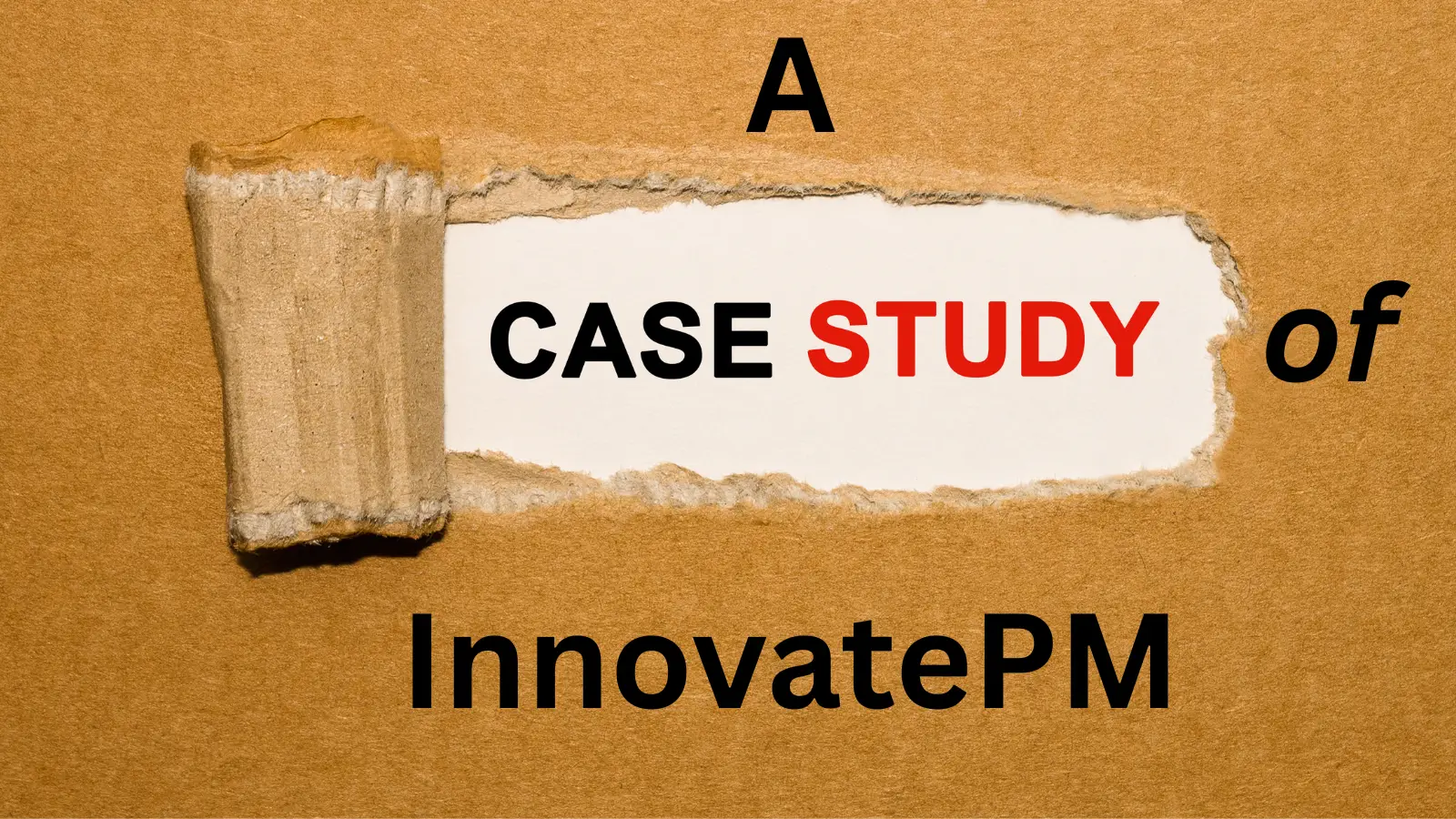
The Struggle: A Hamster Wheel of Content with No Destination
Every week, InnovatePM would publish a well-written article. One week, it was “5 Tips for Better Team Productivity.” The next is “How to Give Great Client Feedback.” Then, “The Ultimate Guide to Project Budgeting.”
Each article was a standalone piece. It would get a small spike of traffic and a few social shares, and then… it would fade into the vast, silent archive of their blog. They were running hard on the content hamster wheel, but their business wasn’t moving forward.
The real problem?
Their traffic was inconsistent, and the worst thing was that they were getting the wrong kind of traffic. The visitors did not sign up, and they were not turned into customers.
They were attracting casual readers, not future customers. Frustration was setting in. All that effort felt like shouting into the void.
The Turning Point:
Realizing the Problem Wasn’t the Bricks, but the Blueprint
When we sat down with InnovatePM, we saw the issue wasn’t the quality of their articles (the bricks). The issue was the complete lack of an architectural plan (the blueprint). Their content was a scattered pile of bricks, not a strong, cohesive house.
We proposed a radical shift:
Stop thinking about individual keywords. Start thinking about owning a topic. We decided to go all-in on becoming the undisputed online authority for one core concept: “Agency Project Management.”
The Quest: Building the Authority Hub
Our plan was to build a powerful content hub using a topical map.
The Pillar: We started by creating the most comprehensive, in-depth guide on the internet for their core topic. This became our pillar page: “The Ultimate Guide to Agency Project Management.” It was the sun in our new content plan.
The Planets: Next, we didn’t just brainstorm random ideas. We mapped out every critical question and challenge their ideal customer faced. This gave us our cluster topics: client onboarding, creative workflows, resource allocation, agency reporting, and project pricing.
The Connections: Over the next three months, we executed the plan. We created a detailed, expert-level article for each cluster topic.
Crucially, every single one of these “planet” articles linked back to our central “sun,” the pillar page. This powerful internal linking structure was designed to signal to Google that InnovatePM didn’t just have an article on the topic—they had the entire library.
The Transformation: The Results That Changed Everything
We told the client to be patient, as building true authority takes time. But after six months, the results were undeniable and transformative.
- The entire “Agency Project Management” cluster of articles saw a 450% surge in organic traffic.
- The pillar page rocketed to the #1 search result on Google for its main term.
- Most importantly, the business impact was crystal clear: Because we were now attracting highly-qualified visitors actively searching for solutions, InnovatePM saw a 217% increase in qualified leads coming directly from their blog.
They weren’t just getting clicks anymore; they were getting customers. They had successfully moved from content chaos to becoming a recognized authority, and their growth proved it.
The Best Topical Map & Content Mapping Tools in 2025
Creating a topical map manually is effective, but it can be time-consuming.
Fortunately, there are a lot of tools in the market that can streamline every step of the process, from initial brainstorming to final visualization.
The right tool for you will depend on your budget, team size, and the scale of your content ambitions.
Here’s a breakdown of the best free, paid, and AI-powered tools to build your content maps in 2025.
| Type | Tools | Key Use |
|---|---|---|
| Free | Google Search + Sheets | Manual topic research & clustering |
| Miro / Coggle (Free) | Visualize content structure | |
| Paid | Semrush / Ahrefs | Data-rich keyword and topic discovery |
| SurferSEO / MarketMuse | AI content briefs and structure suggestions | |
| AI-Powered | ChatGPT / Gemini | Instant topic ideas & cluster mapping |
| Custom GPTs / Content Harmony | Automated content maps from keyword lists |
Free Tools: The Manual Powerhouse
Don’t underestimate the power of free resources. For those on a tight budget or who want to master the fundamentals, these are indispensable.
- Google Search & Google Sheets: The original (and still one of the best) methods. Use Google’s “People Also Ask,” “Related Searches,” and autocomplete features to gather your cluster topic ideas. Then, organize everything in a Google Sheet. It’s manual, but it gives you direct insight into what searchers are looking for.
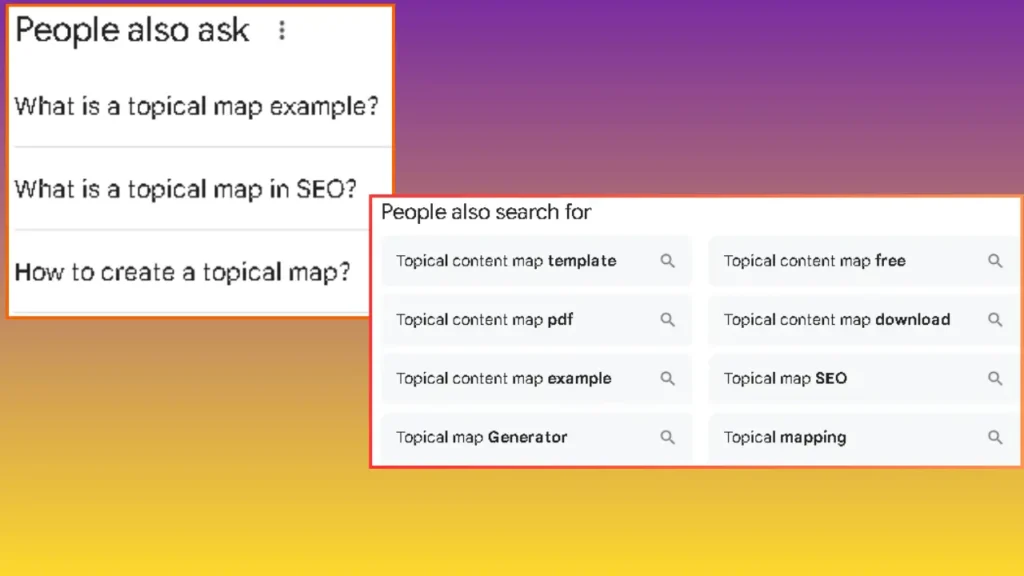
Use Google’s “People Also Ask” and related search suggestions to manually collect content ideas for topical maps. This method offers direct insight into user search intent and helps build SEO-focused topic clusters. - Miro / Coggle (Free Tiers): Our step-by-step guide mentions that mind mapping is crucial for visualization.
Among many tools, Miro and Coggle are free and perfect for creating visual representations of your pillar and cluster structure. They help you to see the connections and plan your internal linking strategy effectively.
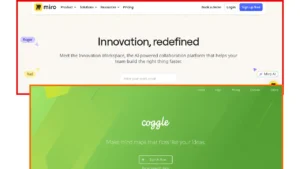
Paid SEO Suites: The Data-Driven Professional’s Choice
For those serious about SEO, a paid subscription to an all-in-one SEO platform is a non-negotiable investment. They provide the critical data needed to make informed decisions.
- Semrush & Ahrefs: These are the industry leaders. While not dedicated “topical map generators,” their keyword research capabilities are unmatched.
Semrush’s “Keyword Magic Tool” and Ahrefs’ “Keyword Explorer” allow you to input your pillar topic and instantly get thousands of related keywords, questions, and subtopics, complete with search volume and difficulty scores.
This feature essentially automates Step 3 (Grouping and Structuring) of our guide.
- SurferSEO & MarketMuse: These content intelligence platforms go one step further. After identifying your topics, these tools analyze the top-ranking pages and provide a detailed content brief.
They tell you which related terms to include, what headings to use, and how long your article should be, essentially creating a data-backed outline for every piece of content in your map.
AI-Powered Tools: The Efficiency Multipliers
Artificial intelligence is revolutionizing content strategy. These tools can dramatically accelerate the brainstorming and structuring phases of topical mapping.
- ChatGPT & Gemini: Large Language Models are exceptional brainstorming partners. You can feed your pillar topic to a model like Gemini and ask it to act as a topical map generator.
Use prompts like, “Generate a list of cluster topics for the pillar ‘Content Writing,’ and group them into logical categories.” The AI can produce a structured outline in seconds, saving hours of manual research.
- Custom GPTs: Think of the OpenAI GPT Store as an app store, but for AI assistants. It’s becoming a go-to spot for marketers. You can find custom GPTs that are already experts in topical mapping.
Since they’ve been trained specifically on SEO strategy, they’ll give you a far more strategic and well-structured plan than you’d get from a standard AI.
- Dedicated AI Mapping Tools (e.g., Keyword Insights, Content Harmony): A new category of software is emerging that uses AI specifically for clustering keywords and building content maps.
You can insert a list of keywords, and the tool will use AI to group them into relevant clusters, suggesting which ones should be pillar pages and which should be supporting articles.
These tools make creating content plans almost automatic – just add your keywords and get a clear roadmap for what to write. For example, if you’re targeting job-related content, you might discover opportunities to write about data entry remote jobs hiring immediately alongside your main career advice articles.
FAQ
1. What is a topical map in SEO?
A topical map is a structured blueprint of all interrelated subjects and queries you plan to cover to build authority around a theme. It groups pillar topics, supporting clusters, and sub-pages, guiding keyword targeting, internal linking, and content sequencing.
2. How is a topical map different from keyword research?
Keyword research lists opportunities; a topical map organizes them into a hierarchy that demonstrates breadth and depth. The map transforms raw keyword lists into a strategic publishing order and internal link architecture.
3. How many articles should a topic cluster include?
Most effective mid-size clusters contain enough pages to cover every meaningful subtopic—often 10–30 URLs for competitive themes. Focus on completeness: map user journeys, questions (Who/What/How/Why), tools, comparisons, and lifecycle stages rather than chasing a fixed number.
4. Should I write the pillar page or cluster articles first?
Either works, but publishing several clusters first lets the pillar launch already internally supported. If you need a strong hub for conversion or linking outreach, draft the pillar early, then iterate as cluster depth grows.
5. How long does it take for a topical map to impact rankings?
Early movement can appear in 3–4 months; substantial authority lift typically arrives in 6–9 months. Timelines vary by competition, crawl frequency, internal linking discipline, and backlink velocity.
6. How do I measure the success of a topical map?
Track: (1) Coverage ratio (planned vs. published topics), (2) Impressions & clicks for cluster terms, (3) Ranking distribution shifts (Top 3 / Top 10 counts), (4) Internal link equity (inlinks to pillar), (5) Assisted conversions or lead quality. Use GSC, analytics goals, and a coverage dashboard.
7. Can I build a topical map on an existing site with scattered content?
Yes; start with a content audit to tag current URLs to tentative clusters. Consolidate duplicates, 301 thin overlap, fill gaps, and retrofit internal links to the chosen pillar pages.
8. How often should I update or expand a topical map?
Review quarterly for new queries, SERP feature changes, or emerging subtopics. Refresh aging articles ( >12 months old, traffic decline) and add new branches when audience needs or product scope evolve.
9. What’s the difference between a topical map, a pillar page, and a hub?
The topical map is the macro plan, the pillar page is the comprehensive anchor asset, and the hub (sometimes same as pillar) is the navigational center linking all supportive pieces.
10. What internal linking structure works best for topic clusters?
Maintain bidirectional links: every cluster page links up to the pillar with descriptive anchor, pillar links down contextually, and lateral links connect closely related sibling articles. Keep orphan rate at zero and avoid overusing identical anchors.
11. Do I still need backlinks if I build strong topical authority?
Yes; internal topical authority amplifies but rarely replaces external authority signals. Quality, relevant backlinks accelerate indexing, trust, and competitive term penetration.
12. What are common mistakes when creating topical maps?
Typical pitfalls: over-focusing on volume over intent, skipping consolidation, publishing pillar last without retro-linking, shallow cluster depth, inconsistent anchor text, ignoring user journey stages, and failing to measure coverage and decay.
13. Can AI tools reliably generate a topical map?
AI can accelerate ideation and first-pass clustering, but human validation is essential to remove irrelevant branches, align with business goals, and prioritize commercial-intent gaps.
14. How do I prioritize which cluster article to publish next?
Score each by strategic value (buyer journey stage), search opportunity (volume vs. difficulty), internal dependency (needed as a link target), and conversion potential. Publish quick-win mid-intent pages early to build traction.
15. How long should a pillar page be?
Length is a byproduct of completeness; many effective pillars fall between 2,500–5,500 words. Focus on covering all core questions, use modular sections, and prune fluff—word count alone is not a ranking lever.
16. How do I choose pillar topics for a small niche site?
Select 1–3 tightly aligned core topics with definable subtopic depth, sustainable content demand, aligned monetization, and realistic competitive gaps. Avoid spreading across unrelated themes early.
Conclusion: From Writer to Content Strategist
Trends in SEO come and go, but they all revolve around a single, permanent truth: authority is the ultimate advantage.
The days of winning long-term traffic by simply targeting isolated, high-volume keywords are over. Google no longer ranks just a page; it ranks the perceived expertise of the entire domain.
This is where topical mapping transforms your approach. It upgrades you from a simple content creator to a successful content strategist.
By embracing this model, you stop writing disconnected articles and start building a powerful, interconnected content hub.
You are no longer just answering a single query but creating the definitive resource for an entire subject area.
This systematic approach is how you build genuine topical authority, demonstrate your E-E-A-T to Google, and create a content asset that delivers predictable, compounding organic growth for years to come.
You now have the “what,” the “why,” and the “how.” You understand the process, from identifying your pillar to visualizing the map and executing your plan. You know the tools that can help you do it faster and more effectively.
The only thing left is to begin.
Stop thinking about your next blog post. Instead, start planning your first topical map. Choose your pillar, find your clusters, and write your articles or blogs.
Ready to Build Your Content Authority?
Reading about topical maps is a great first step, but building one is what drives results. If you’re ready to stop chasing keywords and start building a content engine that delivers predictable, long-term growth, we can help.
Click Here to Book Your Free Content Strategy Consultation.
Let’s discuss your business goals and map out a winning content strategy that establishes you as the definitive authority in your industry.
References & Further Reading
To build this guide, we consulted the work of leading experts and foundational resources in content strategy and SEO. We encourage you to read their work for a deeper understanding.
- Tim Soulo, 96.55% of Content Gets No Traffic From Google. Here’s How to Be in the Other 3.45%.
(https://ahrefs.com/blog/search-traffic-study/)
- HubSpot (article by Mimi An), Topic Clusters: The Next Evolution of SEO
(https://blog.hubspot.com/marketing/topic-clusters-seo)
- Semrush (article by Vlada Vakulik), How to Create a Topic Cluster Content Strategy
(https://www.semrush.com/blog/topic-clusters/)
- Ahrefs (article by Michal Pecánek), Topical Authority: What It Is, Why It Matters for SEO, and How to Build It
(https://ahrefs.com/blog/topical-authority/)
- Search Engine Journal (article by Koray Tuğberk GÜBÜR), How to Build Topical Authority & Become an SEO Powerhouse.
(https://www.searchenginejournal.com/how-to-build-topical-authority/446788/)
Author Bio:
Salauddin Biswas – SEO Specialist, Content Writer, and AI Content Editor
I’m Salauddin Biswas, founder of SEO & Data Entry Hub and Co-founder of S A Websoft. I am a content strategist with a research background. I help businesses turn ideas into content that ranks, engages, and drives results. Over the years, I’ve worked with brands across industries to blend SEO, data insights, and human storytelling—so they stand out in a crowded online space.
You can Visit Our Social Pages:
✅ LinkedIn:
https://www.linkedin.com/in/salauddin-writer-seo-dataentry/
✅Facebook:
https://www.facebook.com/profile.php?id=61557149480263
✅ Instagram:
https://www.instagram.com/seoanddataentry/
✅ Twitter:
https://x.com/SalauddinB1980/
✅ Pinterest:
Link: https://www.pinterest.com/seoanddataentryhub/
✅ YouTube:
URL: https://www.youtube.com/channel/UCCP5sGmyvOw4fuyDkZVO_Sg
✅ Medium: https://medium.com/@SalauddinSEOandDataEntryhub
To get our services:
🚀 https://www.fiverr.com/data_entry_80

